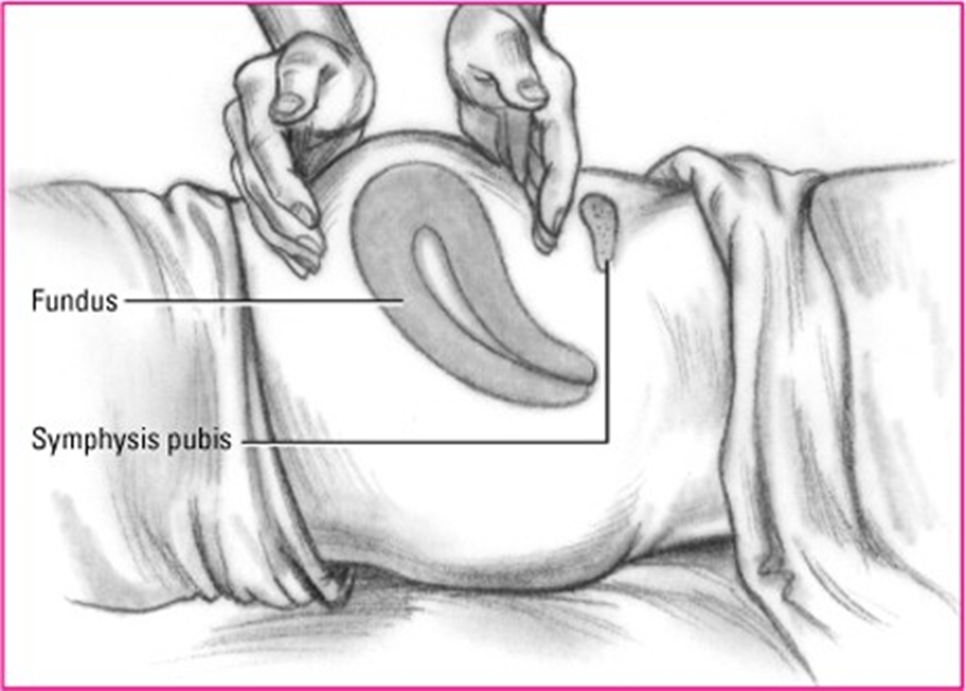A nurse is assisting with the care of a client who is in the second stage of labor.
The nurse observes retraction of the fetal head against the maternal perineum as the head is birthed.
Which of the following actions should the nurse take?
Encourage the mother to push during the next contraction.
Prepare for immediate delivery of the baby.
Call for additional medical support.
Administer pain relief medication.
The Correct Answer is C
Choice A rationale:
Encouraging the mother to push during the next contraction is not the appropriate action in this situation. Retraction of the
fetal head against the maternal perineum is a sign of shoulder dystocia, a serious obstetric emergency that requires immediate
intervention. Pushing could potentially worsen the situation by further impacting the anterior shoulder against the maternal
pubic symphysis.
Choice B rationale:
While preparing for immediate delivery of the baby may be necessary in some cases of shoulder dystocia, it is not the first
priority. The initial focus should be on relieving the impaction of the anterior shoulder and facilitating the safe delivery of the
baby. This often requires additional maneuvers and medical support.
Choice C rationale:
Calling for additional medical support is the most appropriate action in this situation. Shoulder dystocia can be a complex and
challenging emergency, and it's crucial to have experienced healthcare providers available to assist with the delivery.
Additional personnel can provide support with various maneuvers, fetal monitoring, and management of potential
complications.
Choice D rationale:
Administering pain relief medication is not a priority in this situation. While pain management is important during labor, it
should not take precedence over addressing the immediate obstetric emergency. The focus should be on resolving the
shoulder dystocia and ensuring a safe delivery.
Additional notes:
It's important to note that shoulder dystocia is a relatively uncommon complication, occurring in approximately 0.5-1% of all
vaginal births. However, it's a potentially serious emergency that can lead to significant complications for both the mother and
baby, such as brachial plexus injury, hypoxic-ischemic encephalopathy, and postpartum hemorrhage.
Early recognition and prompt intervention are crucial for optimizing outcomes in cases of shoulder dystocia.
Nursing Test Bank
Naxlex Comprehensive Predictor Exams
Related Questions
Correct Answer is C
Explanation
Choice A rationale:
Stopping breastfeeding until the antibiotics are done is not a recommended practice. Most antibiotics are safe to use while
breastfeeding. Moreover, stopping breastfeeding can lead to engorgement.
Choice B rationale:
Applying cold compresses 20 minutes before each feeding is not a recommended practice. Cold compresses are usually
recommended after breastfeeding to help reduce swelling. Warm compresses or taking a warm shower before breastfeeding
can help increase milk flow and promote the letdown reflex.
Choice C rationale:
Feeding the baby every 2 hours is a good practice to prevent breast engorgement. Frequent feeding helps to empty the breasts,
which can prevent them from becoming overly full and engorged.
Choice D rationale:
Not wearing a bra during the daytime is not a recommended practice. Wearing a well-fitted bra can provide support and help
reduce discomfort associated with breast engorgement.
Correct Answer is B
Explanation
Choice A rationale:
Three fingerbreadths above the umbilicus is too high for the uterine fundus to be at 12 hours postpartum. Immediately after delivery, the fundus is typically at the level of the umbilicus. It then descends approximately one fingerbreadth per day.
If the fundus is found to be three fingerbreadths above the umbilicus at 12 hours postpartum, it could be a sign of uterine atony, which is a serious condition that can lead to postpartum hemorrhage.
Choice C rationale:
One fingerbreadth above the symphysis pubis is too low for the uterine fundus to be at 12 hours postpartum. This would be more consistent with a woman who is several days postpartum.
Choice D rationale:
One fingerbreadth below the umbilicus is also too low for the uterine fundus to be at 12 hours postpartum. This would be more consistent with a woman who is 1-2 days postpartum.

Whether you are a student looking to ace your exams or a practicing nurse seeking to enhance your expertise , our nursing education contents will empower you with the confidence and competence to make a difference in the lives of patients and become a respected leader in the healthcare field.
Visit Naxlex, invest in your future and unlock endless possibilities with our unparalleled nursing education contents today
Report Wrong Answer on the Current Question
Do you disagree with the answer? If yes, what is your expected answer? Explain.
Kindly be descriptive with the issue you are facing.
